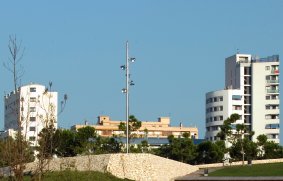
FEDERACION ESPAÑOLA DE MUNICIPIOS Y PROVINCIAS
- Contact |
- Who are we? |
- Site Map |
- Job offers
Approved the National Plan to improve air quality
The Government has approved the Council of Ministers the National Plan to Improve Air Quality, which involves all levels of government and that includes 90 steps to "promote healthier cities." The text contains some of the contributions made by the FEMP.
The plan, according to the government, strengthen the coordination of different policies and measures with other sectoral plans, particularly with air quality plans that can take the Autonomous Communities and local authorities within their powers.
The goal is healthy urban centers across the pedestrian and encourage mobility choices and wise use of private vehicles. Based on the current situation analysis, it was found that traffic is the key to improving air quality, so that around traffic articulate many of them.
Priority, the Plan establishes a series of guidelines designed to ensure compliance with limit values for PM10 (particulate matter) and NO2 (nitrogen dioxide) and the simultaneous reduction of ozone precursors, contaminants for which there have been similar behavior in terms of sources, dispersion and levels in zones or agglomerations.
Awareness-raising
To this end, we propose the adoption of a series of measures in key emitting sectors and other measures of awareness to inform citizens and thus part of the possible solutions that can each take. This is to ensure proper awareness of citizenship that involves a change in normal behavior, especially those related to mobility and its influence on health through air quality.
These measures includes measures of awareness and dissemination campaigns and use of social networks, to a green mobility in cities (support for cycling, car sharing and use of the train) and emission reduction strategies in ports (movement machinery, rail access), airports (renewal of aircraft and passenger movement vehicles), agriculture (crop rotation, compost and biomass) and industry (emission reduction and risk control).
It also includes the development of a protocol for the proper relocation of measuring stations pollution levels and the implementation of an Information System, Monitoring and Prevention of air pollution to ensure the information exchange mechanisms in situations of risk to health . To have instant information about the situation, the competent authorities shall make known the information collected by all local systems.
Protected urban atmosphere
Other measures include the creation of tools to define Protected Urban Atmosphere in cities with limited traffic according to a new labeling system for cars based on their degree of emission of pollutants, the fleet renewal by encouraging the purchase of electric cars or hybrid and limiting the maximum speed at the periphery of cities, as slots.
In 2013, in view of the results achieved, proceed to review the objectives of the Plan and update the measures, incorporating those that are considered necessary.

